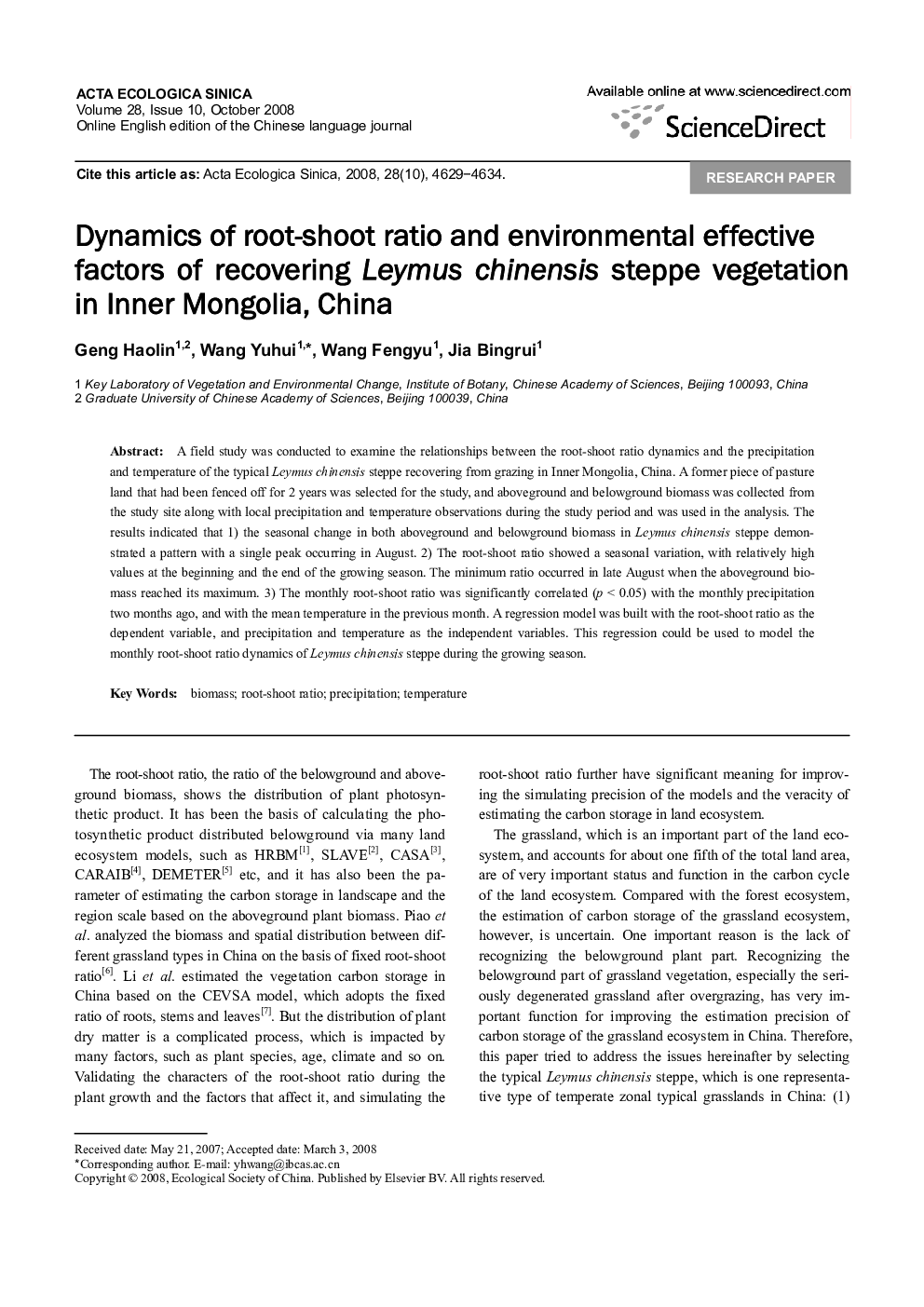| Article ID | Journal | Published Year | Pages | File Type |
|---|---|---|---|---|
| 4380271 | Acta Ecologica Sinica | 2008 | 6 Pages |
A field study was conducted to examine the relationships between the root-shoot ratio dynamics and the precipitation and temperature of the typical Leymus chinensis steppe recovering from grazing in Inner Mongolia, China. A former piece of pasture land that had been fenced off for 2 years was selected for the study, and aboveground and belowground biomass was collected from the study site along with local precipitation and temperature observations during the study period and was used in the analysis. The results indicated that 1) the seasonal change in both aboveground and belowground biomass in Leymus chinensis steppe demonstrated a pattern with a single peak occurring in August. 2) The root-shoot ratio showed a seasonal variation, with relatively high values at the beginning and the end of the growing season. The minimum ratio occurred in late August when the aboveground bio-mass reached its maximum. 3) The monthly root-shoot ratio was significantly correlated (p < 0.05) with the monthly precipitation two months ago, and with the mean temperature in the previous month. A regression model was built with the root-shoot ratio as the dependent variable, and precipitation and temperature as the independent variables. This regression could be used to model the monthly root-shoot ratio dynamics of Leymus chinensis steppe during the growing season.
